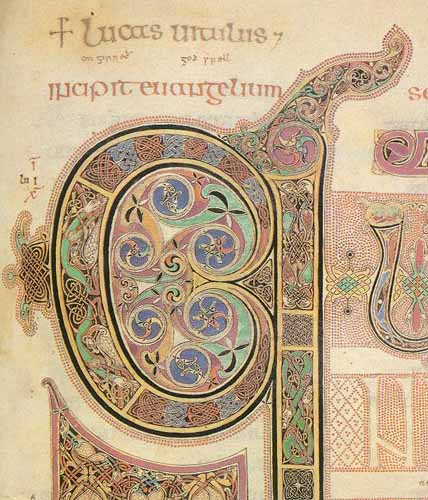In the first chapter of his
important book, Gary Anderson lays out
his cards as to how to approach the issue of sin. His will be a history of ideas and their
development approach, or put another way, a diachronic approach. In principle, this is no different than what
I did in my book Jesus the Seer where I charted the way prophecy was
viewed and talked about at the various stages of salvation history. Anderson
will do the same thing for the topic of sin, and he stresses from the outset,
quite rightly, that metaphors matter.
And the metaphors about sin and its consequences and remedies are
varied. We can talk about being cleansed
from sin, or having a burden lifted, or
having a stain removed. Anderson stresses that sin always has
consequences in a moral universe, and of course he is right about that. It’s one of the things Christians sometimes
have trouble wrapping their minds around.
They tend to think that if your sins are forgiven then there are no
consequences to those sins. This of
course is false. When a drunk driver runs over a small child’s leg, which makes
it impossible for the leg to be entirely properly healed or reconstructed, even
if the man is forgiven for his sinful act,
the child still has to live with the consequences of it, and indeed, if
the man is arrested and jailed, he will have to live with the tangible
consequences as. Even if he is not
arrested or jailed, if the man has any moral compass at all, there will be
consequences, there will be guilt to live with or be dealt with. Sin always has consequences, which
forgiveness does not necessarily erase.
Forgiveness can produce healing in a relationship or help to move on in
life, but it seldom erases or reverses consequences of sin, particularly if we
are talking about interpersonal sin and person to person forgiveness, and not
talking in the abstract about what God does with our sin.
Anderson begins his
discussion of the ‘early history of sin’ by talking about the Day of Atonement
ritual we find in Lev. 16. He points out
that the way sin is envisioned in this chapter is as a weight or burden that
must both be lifted from the person in question, but also placed on some other
creature (the scapegoat), and removed from the scene. “It is not enough for Israel to fast
and repent; the physical material of the sin that had rested on the shoulder of
every Israelite must be carted away into oblivion.” (p. 6). Anderson
contrasts this with the way that Jesus regularly speaks of sin as a debt to be
paid (see e.g. the parable in Mt. 18.23-34).
He explains, in part the transition from the notion of sin as a burden
to sin as a debt with the onset of the use of the Aramaic language and its
coming to prominence among God’s people from the Persian period onwards. “One
of the linguistic items that came on board was the construal of sin as a debt,
a metaphor implied in the Aramaic tongue, but not in the Hebrew.” (p. 8). Of course one of the problems with this
observation for Biblical theology is that apart from a very few lines in Daniel
and a few sayings of Jesus, the Bible is not written in Aramaic. It is written in Hebrew and Greek. Should we mainly derive our understanding of
sin and its metaphors from a language which contributes precious little to the
diction of the Bible? It’s a question
worth asking.
Anderson goes on to
describe what the use of economic language did to the way sin was viewed. If sin creates a debt, then according to
ancient culture, the debt must be paid off in some way. One could even become a debt-slave and so work
it off. Take for example the case of
God’s people being sold into exile in Babylon,
due to their sinfulness. “There the physical punishment of exile served as the
means by which Israel
raised ‘hard currency’ to pay off the debt she owed.’ (p. 8). We see this sort economic way of viewing sin
and its consequences when Paul says ‘the wages of sin is death’ (Rom. 6.23). Anderson
reasons that once it became common to see sin as a debt, the next normal step
was to see virtuous activities as a credit, building up brownie points in
heaven. And of course he is right that
various early Jews did view the matter this way. Tobit for example in Tob. 4.9 has a father
telling his son that if he will give alms on a regular basis “you will be
laying up a good treasure for [yourself] against the day of necessity.” One
might think of the phrase “storing up treasures in heaven” used by Jesus. Anderson
then charts how a doctrine of merit arises, and with it the rising notion that
human beings could do something to counteract or compensate for their sins.
Why does
this sort of discussion matter? Anderson answers towards
the close of the first chapter that of course how one talks about sin to some extent determines what one does about
it. He is right about this of
course. Provocatively he adds “If God
keeps a record of what one owes, then there must be a corresponding ledger
sheet that documents what one owns.” (p.
13). What happens when one begins
thinking this way is that one begins to assume a business mentality about sin
as debt, and virtue as credit. One
begins to think in terms of an exchange— for example almsgiving to the poor
is seen as a credit which helps cancel or pay back some of the debt. This idea
of course will not only characterize the ongoing Jewish tradition, but some
forms of the Christian tradition, even leading to the notions of indulgences,
or buying years off of purgatory through good works. For example, the magnificent Norman cathedral
in Durham England where I did my doctoral
work was built by stonemasons free of charge…… well not totally free. They were granted all sorts of treasure in
heaven, namely years off of purgatory
(and maybe even forgiveness for sins).
It is of course some of these notions of sin and its punishment and
virtue and its rewards that led to the Protestant Reformation in the first
place, of which we will say more later in this discussion.

